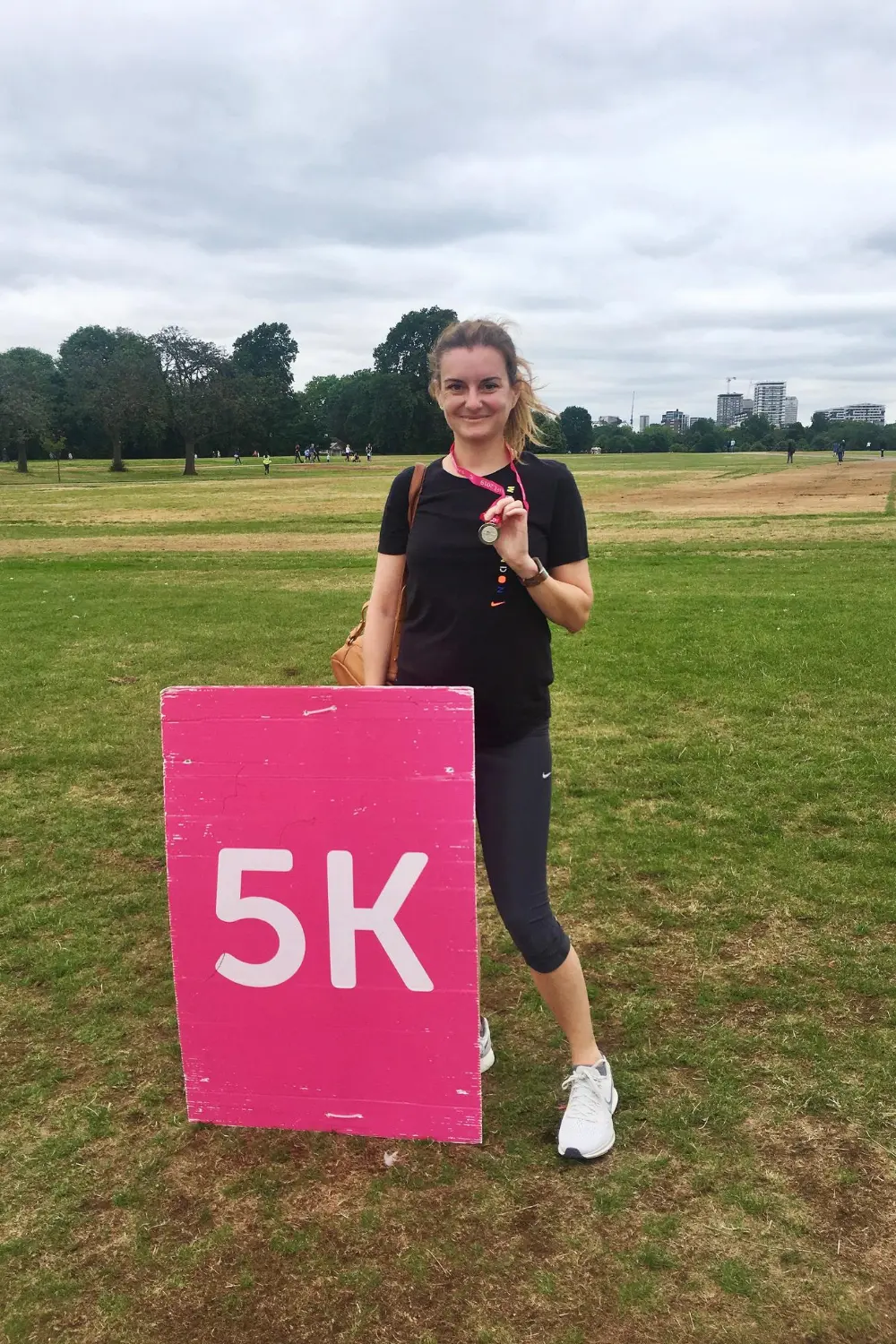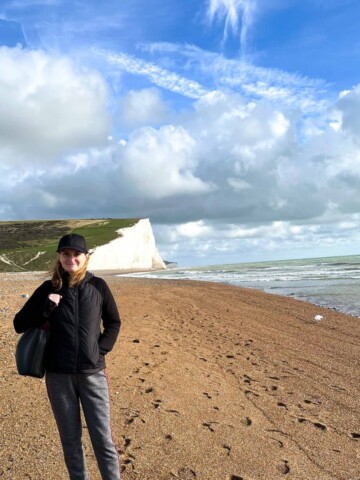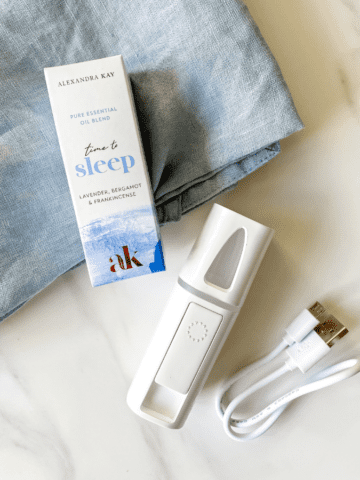I’m going to start with an apology . . . this is a long post. It is long because I have a number of chronic medical conditions, and therefore don’t just have one ‘diagnosis story’ but many, many stories. However, I should say that the post below doesn’t detail every single test or doctor that I saw, but instead gives the ‘highlights’ so to speak. If I related every detail this post would be even longer than it already is. Plus, I haven’t kept a diary and so probably can’t remember every little detail even if I tried – blame the fibro fog for that one!
Maybe get a coffee or a tea before you start reading . . .
It was difficult to write this post. The first time I tried I wrote about four paragraphs before I had to stop as it was making me upset. It has been a hard journey, and in some ways I have tried to block out a lot of the experiences I have had along the way. There have been painful, invasive tests, dismissive doctors who told me it was ‘all in my head’ and many moments of breaking down with fear, frustration, and jealousy of others who have it a little easier. Each new test, new diagnosis, new medication or treatment has brought with it profound sadness. That another bit of my body is not functioning in the manner which it should. That I am moving further and further away from a ‘normal’ life, whatever that may be.
But this is my story. And I am, in some strange way, proud of myself for enduring what I have. That despite silently crying during tilt tests, and putting up with needles plunged into all different parts of my body, that I am here, with a voice. That voice is tiny. But I am proud of my little Instagram account. I may not have tens of thousands of followers or ‘likes’ on my posts, but I do have a lovely community of people who I share this part of my life with. I hope this story lets you get to know me a little more, and perhaps helps you, in some little way, to know that you are not alone in your experiences.

Most stories have a definite beginning, middle and end. My diagnosis story has both an abrupt beginning and a long drawn-out one. For as long as I remember I have felt a bit more tired than my friends and family members. It wasn’t dramatic, not enough to consult with a doctor, but I was always aware that I couldn’t do quite as much activity as others were able to and that I needed my sleep. But that sleep didn’t always overcome my fatigue, even if I got my full eight hours. I’ve also always been aware that my leg muscles seemed to ache and be stiff and sore no matter how many stretches I did after exercise. Throughout my late teens and twenties I was very physically active. I went to the gym, did classes and ran around the local parks. But my legs always felt heavy and tired. Like blocks of cement. Yet as I was able to keep up a fitness routine, there didn’t seem to be any need to seek medical attention.
So the drawn out beginning was a history of fatigue and muscle ache. The abrupt beginning was a nasty reaction to an infusion of medication for Raynauds syndrome – a condition I have had since childhood. To put a long story short, I fainted on a train the morning after the infusion while on my way to have another day of it (it was a five day course). I had a headache, dizziness, fatigue and felt really unwell in a way that I don’t know how to put into words. And it just didn’t stop. Weeks went by, then months, and I still felt unwell with these symptoms. My GP was perplexed, and didn’t know what to do with me. I was given tablets to stop the dizziness, which worked for a while but wasn’t a long-term solution.
It was then suggested that perhaps anxiety was causing my symptoms. I knew it wasn’t, or at least not all of them. I’m sure a lot of us, particularly females, have had this suggestion rather than tests or clinical examination. Makes me so cross . . .
After nearly a year of battling this suggestion of anxiety, and trying to continue to work with great difficulty, I eventually saw a doctor as a private patient. He was a neurologist who specialised in dizziness. And when I sat before him I finally got, what I thought at the time was, the answer to the puzzle. I had vertiginous migraine (also sometimes known as vestibular migraine or migraine associated vertigo). He explained that it was a form of migraine (although at the time headaches weren’t that much of an issue) and gave me lifestyle advice as well as some preventative medication. I was so happy to finally have a ‘label’ for the problems, and to know after so long what the issue was. I presumed, naively, that there would be treatment and that the treatment would stop the symptoms. How wrong I was!
Initially the medication worked quite well and I almost felt like myself again. But then it gradually stopped working and the dizziness returned, along with more severe headaches and migraines. For several years I saw a few different doctors in relation to this condition, not least because I was not getting significantly better, perhaps even worse, despite trying a number of drugs, many of which had terrible side-effects. I was referred for vestibular physiotherapy, and still see the same physiotherapist to this day.
But then things started to feel different somehow. My muscles were aching, the fatigue got worse. I felt a bit breathless, and every little movement seemed to take so much more energy and then drain me afterwards. Now this bit is going to sound strange, but I cannot remember who exactly diagnosed me with fibromyalgia. I know that a doctor that I was seeing for a different condition wrote in my notes that she suspected I had it, but I wasn’t ever told this by her or sent the letter that stated it. I know that I was suspected of having it by other doctors, but not formally diagnosed. So I asked my GP to refer me to a specific hospital that offered a holistic approach to treatment, and I am still a patient there now. I saw the doctor who confirmed diagnosis after prodding me a lot and me saying ‘ouch’ a lot. I was then referred on to occupational therapy to discuss time management and pacing, a dietician and a physiotherapist. I have found the advice on diet to be particularly helpful.
Then, once again, things seemed to change and I felt a new type of ‘different’, and not in a good way. I was getting light-headed all the time and dizzy when I stood up or was walking. Any form of exercise felt incredibly difficult and I was even more tired. I was referred for testing to see if I had an autonomic condition, on the suggestion of a headache specialist. So I went through three days of testing, including different types of tilt tests, respiratory tests, blood tests and 24 hour ECGs. The results showed that I had low blood pressure but, I was told, not much else. This seemed odd to me. On one of the tilt tests I had been on the verge of fainting, and am positive I would have if I hadn’t have said that this was about to happen and quickly laid flat by the nurses and doctor present.
Another year or so passed. I still felt terrible, and was getting worse. I lost my job due to taking medical leave a bit too often. I spent most of my time at home in bed, half asleep and feeling very down. I knew that there was more to what was happening than migraine and fibromyalgia. But despite repeatedly going to see my GP, there wasn’t any further progress in finding out what the problem was.
Along the way I had managed to get a referral to a sleep clinic. I was having weird jolting sensations as I fell asleep. After a sleep study (well, three in total to date), I was diagnosed with a fairly newly recognised condition called (very stupidly!) exploding head syndrome, as well as hypnic jerks. During the course of the post-sleep study consultation, I was asked about any other symptoms and mentioned that I was feeling dizzy when I stood up and had a feeling of my heart beating too fast. The doctor said that he thought I had postural tachycardia syndrome (POTS), and recommended that I see a particular doctor for this. I said that I had already been tested, but he was rather insistent that I see this specialist.
So, back to the GP for a referral for this specialist (a cardiologist). Again, to cut a long story short, I saw this cardiologist, and at last, I felt that I was being taken seriously. I left that clinic room with a list of referrals for a tilt test, respiratory tests, hypermobility assessment, lots of blood and urine tests, week-long ECG and a heart scan (I’m going to do a ‘My experience of a tilt test’ post soon). As is fairly common, so I am told by this doctor, I appeared to reach the criteria for POTS from the tilt test, but not others. I am therefore, in his eyes, a bit ‘potsy’. I also have low blood pressure, and orthostatic hypotension. Initially I took midodrine, although I couldn’t continue to take this as it contra-indicates with another medication I have since been taking for a different condition. I also take slow sodium tablets and cover my food with salt (I recommend pink Himalayan salt for a less ‘salty’ taste). I’ve also seen a physiotherapist who recommended strengthening my leg muscles, which I have found to be very beneficial to reducing my symptoms.
One of the referrals that this cardiologists did was to a specialist hypermobility unit. After being assessed using the Beighton scale, I was diagnosed with Type III Ehlers-Danlos Syndrome (hypermobility type). I am not super-bendy all over, but can easily touch my toes, touch my thumb to my wrist, as well as having flat feet and mild scoliosis. I have been advised since that POTS, EDS III and mast cell activation syndrome have a close association, although it is unclear why.
So, that covers my fibromyalgia, POTS, EDS, and sleep issues. At this point I figured I was done. That everything that was wrong with me had been identified and was being treated as best it could. I can’t recall exactly how long this phase lasted for, but it was soon broken by two subsequent diagnoses: mast cell activation syndrome and interstitial cystitis.

It was the end of the summer in 2016 that I started to feel too hot. It was weird type of burning skin hot that didn’t make sense. On several occasions I woke in the middle of the night gasping for breath, extremely dizzy, and baking hot. On one of those occasions I went to A and E, such were the severity of the symptoms. Once again, I went back to the GP and asked any other doctor I saw what this could be. I drew a complete blank for nearly six months, other than a very scary test to see if I had a type of cancer. Thankfully, the test came back normal.
Then I saw my cardiologist who said that the symptoms could easily be mast cell activation syndrome. I had never heard of this, and it isn’t properly tested for by the NHS (in my opinion). As a result I had to see a private doctor and pay for rather expensive tests that aren’t available on the NHS. The results came back that I had abnormal levels of histamine, and so I was diagnosed with condition.
Again, I was so relieved. I thought that there must be a treatment for the condition, surely? Well, the doctor said that about 80% of patients saw an improvement in their symptoms with a combination of medication and dietary adjustments (low histamine diet). So I thought it was all going to be ok. That the hot burning skin problem would soon diminish and I would feel better.
Has it gone away? No. It hasn’t. There has been a slight improvement, but some days are better, others worse. Lots of things set this flushing off, including food, exercise, stress and being in a warm environment. It is really difficult to avoid being too warm, and of course it is important to eat and exercise! I’m still hoping that the symptoms will decrease over time with continued medication and lifestyle adjustments.
In terms of UTIs, well, I’ve had a lot of them! There was a spate in the latter part of last year when I had four in the space of about six months. I took antibiotics, but they jut came back. Mid-way through this time I was referred to urogynaecology and had a cystoscopy (test to see inside the bladder), which showed an inflamed bladder. So I was tentatively diagnosed with interstitial cystitis. This was also a sort of relief. I had been experiencing the need to go for a wee many times a day for years and also urgency. It all added up that I had this condition as well.
As I said above, this isn’t all the tests and doctors that I have seen. It would be a huge post (and this is already way too long – congratulations for making it to the end!) and not that interesting. So these are the main highlights.
I understand that most of these conditions have an association. That they are often found together, even though doctors don’t really know why as yet. As many of you also seem to experience all these conditions, I’m sure that you feel the same sense of being overwhelmed with symptoms that I do. There are so many bits of my body that just don’t work as they should and cause me a lot of pain.
But, I hope that some improvements will come with time. That there will be new treatments to try or that flare-ups will come less frequently. I am hopeful that the research that shows that POTS can diminish over time will apply to me, as well as my MCAS becoming more under control.
I hope that my story was useful in some small way. I find it helpful to know that others have the same experiences as I do, so as not to feel so alone with it all. Not that I want anyone else to suffer of course. Each of us have different symptoms and I hope that you find some treatments that help reduce yours as much as is possible.

















Cathie says
Hi Claire
Sorry to see you have been on the medical merry go round. I know the feeling well.
Reading your story I wondered whether you had ever looked into oxalates and a low oxalate diet for your symptoms?
A good place to start would be Sally K Norton’s website.
All the best
Cathie
throughthefibrofog says
Hi Cathie, it is something that I will discuss with my doctor. Thank you for being in touch, Claire
JT0n1c says
Boy does this sound familiar! I also recieved a diagnosis of fibro many years ago, then kept piling more symptoms, doctors, and diagnoses on to the pile! Was dx with migraine 2 years ago, and still haven't gotten an explanation for the dizziness. Am currently undergoing testing for a mast cell issue (which one is still to be determined). Have done the tilt table (did you do the one where they put warm/cool water or air in your ears? Ye gads that was AWFUL! Plus gallons of blood worth of blood tests, CT scans, MRIs, ultrasounds, endoscopies, even an exploratory surgery. Next up is a 24-hour urine test (fun!)
No POTS for me, as my BP tends to run high, rather than low. No EDS either.
Wishing you all the luck and best wishes in this journey!!
[email protected] says
Yes, we have had a lot of the same tests and diagnoses by the sounds of it haven't we! Sorry to hear that you are still undergoing testing - it is really hard to have that uncertainty and go through all the procedures. I'm still in the process of having some tests as well.
I'm not a doctor - so please don't quote me on this, but it may be worth asking if your migraines are vestibular migraines or have impacted upon your vestibular system. That's what the issue for me is. So I have physio for this.
And as I understand it you can have a certain type of POTS with high blood pressure rather than low - have a look at the POTS UK website. Again, might be worth asking your doctor about this to be sure.
Wishing you all the best as well. Hope you find some answers.
Karen says
If you are having UTI pains, have a hypermobility disorder, dizziness and pain you may have tarlov cysts. You should get an MRI of your lumbar spine. They can cause all these problems and more.
Claire says
Thank you, I have had an MRI and don't have tarlov cysts fortunately.